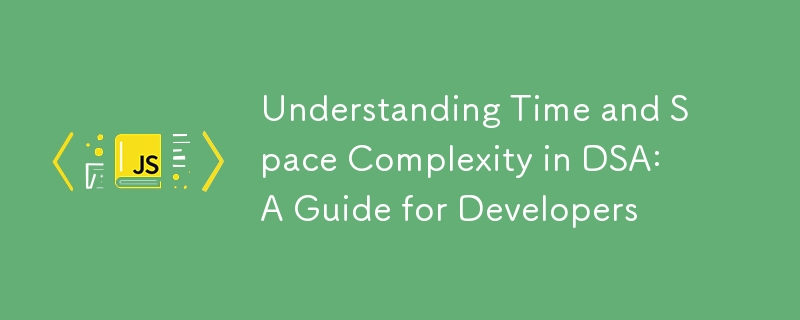

In the realm of software development, efficiency is key. Whether you're building a small-scale application or a large, complex system, understanding how your code performs under various conditions is crucial. This is where the concepts of time complexity and space complexity come into play. These metrics help developers assess the efficiency of algorithms, guiding them to write code that runs faster and consumes less memory.
In this article, we'll dive into the fascinating world of time and space complexity, breaking down these concepts with practical examples and insights. Whether you're preparing for a technical interview or simply looking to deepen your understanding of algorithm optimization, this guide will provide you with the foundational knowledge you need.
Time complexity is a measure of the amount of time an algorithm takes to complete as a function of the size of its input. It's a crucial metric in determining the efficiency of an algorithm, especially when dealing with large datasets.
Big O notation is the standard way to describe time complexity. It represents the upper bound of an algorithm's runtime, helping us understand the worst-case scenario. Some common time complexities include:
Let's consider a simple example of finding the maximum value in an array. The algorithm iterates through each element, comparing it to the current maximum.
function findMax(arr) {
let max = arr[0];
for (let i = 1; i < arr.length; i++) {
if (arr[i] > max) {
max = arr[i];
}
}
return max;
}
In this example, the time complexity is O(n) because the algorithm must check each element in the array once.
Space complexity measures the amount of memory an algorithm uses relative to the size of its input. It's crucial for understanding how resource-intensive an algorithm is, especially when working with limited memory.
Consider the following recursive function to calculate the factorial of a number:
function factorial(n) {
if (n === 0) return 1;
return n * factorial(n - 1);
}
This algorithm has a time complexity of O(n) and a space complexity of O(n) as well, because each recursive call adds a new frame to the call stack.
In many cases, there's a trade-off between time and space complexity. An algorithm that is faster might use more memory, and vice versa. Understanding these trade-offs is essential for selecting the right algorithm for your specific needs.
For instance, consider the trade-off in dynamic programming, where you use extra space to store intermediate results, thus reducing the time complexity by avoiding redundant calculations.
Mastering the concepts of time and space complexity is fundamental for any developer looking to optimize their code. These metrics not only help in writing efficient algorithms but also play a critical role in making informed decisions during the development process. As you continue to develop your skills, remember that efficiency is not just about speed—it's also about making the best use of available resources.
Understanding and applying these concepts will enable you to write code that is both fast and memory-efficient, a hallmark of a skilled programmer. So, the next time you sit down to solve a problem, take a moment to think about the time and space complexity of your solution—you'll be a better developer for it.
The above is the detailed content of Understanding Time and Space Complexity in DSA: A Guide for Developers. For more information, please follow other related articles on the PHP Chinese website!
 Which mobile phones does Hongmeng OS support?
Which mobile phones does Hongmeng OS support?
 windows explorer has stopped working
windows explorer has stopped working
 How to clear the WPS cloud document space when it is full?
How to clear the WPS cloud document space when it is full?
 How to check download history on TikTok
How to check download history on TikTok
 Windows cannot complete formatting hard disk solution
Windows cannot complete formatting hard disk solution
 Why can't I delete the last blank page in word?
Why can't I delete the last blank page in word?
 How to use each function in js
How to use each function in js
 What to do if there is no cursor when clicking on the input box
What to do if there is no cursor when clicking on the input box




